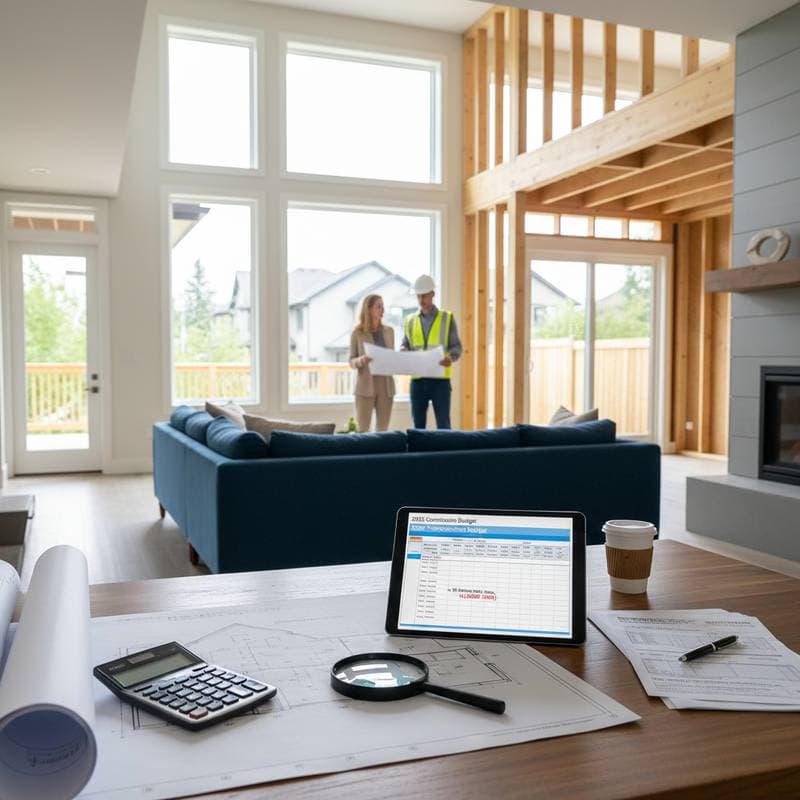The Real Cost of Whole-Home Generators in 2025
Installing a whole-home generator represents a substantial investment that safeguards your home against prolonged power disruptions. Homeowners often seek clarity on exact pricing, the elements that influence those figures, and the circumstances under which such a system proves worthwhile. This guide details realistic cost estimates, project timelines, and key expectations for the installation process.
Functions of a Whole-Home Generator
A whole-home generator supplies power to your entire electrical system the moment utility power fails. It operates on natural gas or propane and integrates with an automatic transfer switch that detects outages and activates the unit seamlessly. In contrast to portable models, this system initiates automatically, eliminates the need for manual intervention during blackouts, and sustains operation for extended periods provided adequate fuel reserves exist.
Detailed Cost Breakdown and Influencing Factors
The complete installed price for a whole-home generator typically falls between $8,000 and $20,000, varying based on the unit's capacity, fuel source, and property-specific conditions.
| Component | Material Cost Range | Labor Cost Range | Total Cost Range | Key Influencing Factors |
|---|---|---|---|---|
| Generator Unit (18–26 kW) | $4,000–$8,500 | N/A | $4,000–$8,500 | Unit size, manufacturer brand, and efficiency ratings determine the base price. Larger capacities handle more appliances and startup surges. |
| Automatic Transfer Switch | $600–$1,200 | $400–$1,000 | $1,000–$2,200 | Compatibility with your home's electrical service amperage (e.g., 200-amp panels) is essential for safe operation. |
| Concrete or Gravel Pad | $300–$700 | $300–$500 | $600–$1,200 | Accessibility to the installation site and necessary ground grading impact expenses, especially on uneven terrain. |
| Gas Line Connection | $400–$1,000 | $600–$1,200 | $1,000–$2,200 | The distance from the existing gas meter or propane tank, along with pipe sizing requirements, drives up costs. |
| Electrical Wiring and Permits | $500–$1,200 | $1,500–$3,000 | $2,000–$4,200 | Adherence to local building codes, including trenching for conduits, adds layers of complexity and expense. |
Three primary factors shape the overall cost:
- Material Specifications: The generator's power output in kilowatts, reputable brands like Generac or Kohler, and fuel efficiency all contribute to higher-end pricing.
- Labor Intensity: Tasks such as integrating with the electrical panel, excavating trenches, and configuring gas lines require skilled professionals, escalating fees in urban or challenging sites.
- Site and Environmental Variables: Proximity to utility connections, soil stability, and local regulations can either streamline or complicate the project.
Step-by-Step Installation Process
The installation unfolds in a structured sequence to ensure reliability and compliance.
- Initial Site Evaluation: A licensed electrician and plumber assess your home's electrical load, available gas supply, and main panel capacity to recommend an appropriate unit size.
- Securing Permits: Local jurisdictions mandate approvals for electrical modifications, gas connections, and often inspections by building and fire officials to verify safety standards.
- Preparing the Foundation: Construct a stable, level pad using concrete or compacted gravel capable of bearing 400 to 600 pounds while elevating the unit above potential flood levels for proper drainage.
- Positioning the Unit and Making Connections: Place the generator at least 18 inches from any walls and five feet from windows or doors, in line with safety codes, then secure gas and electrical hookups.
- Wiring the Transfer Switch: The electrician configures the switch to isolate your home's panel from the grid, preventing dangerous backfeeding into utility lines.
- Final Testing and Activation: Conduct comprehensive checks to validate automatic startup, balanced voltage output, and uninterrupted fuel delivery under simulated load conditions.
Essential Safety and Compliance Considerations
Adhere strictly to setback distances, employ rigid or flexible conduit for all wiring, and establish proper grounding as dictated by the National Electrical Code or local equivalents. Gas piping should accommodate required flow rates and pressures, using sizes from half-inch to three-quarter-inch black iron or corrugated stainless steel tubing (CSST). Always incorporate a manual shutoff valve and a drip leg to trap condensation and prevent system damage.
Pitfalls to Steer Clear Of During Installation
- Selecting an Undersized Unit: Calculate your needs based on the main panel's amperage and peak demands, such as air conditioner compressors, to avoid overloads during critical times.
- Bypassing Required Permits: Official inspections confirm secure wiring and fuel setups; neglecting this can invalidate homeowner insurance policies and pose hazards.
- Overlooking Service Clearance: Maintain at least three feet of open space around the unit for routine access by technicians.
- Neglecting Grounding Protocols: Inadequate grounding risks voltage fluctuations that could fry sensitive electronics like computers or medical devices.
Ongoing Maintenance and Expected Longevity
Post-installation, perform a loaded test run to verify full functionality. Ahead of storm seasons, inspect oil levels, coolant conditions, and fuel line pressures to preempt issues. Schedule annual professional servicing to replace air and oil filters, examine spark plugs, and test the automatic start mechanism. Monitor the unit's runtime hours via its meter; consider replacement when repair costs surpass 40 percent of a new system's price, typically after 10 to 15 years of moderate use.
Weighing DIY Elements Against Professional Expertise
Homeowners may handle preliminary tasks like site clearing and basic excavation if equipped with the right tools. However, all electrical wiring, gas line installations, and system testing demand certified electricians and plumbers to meet code and ensure safety. Apply the DIY Gate principle: Proceed only if you possess relevant skills, the risks remain minimal, and standard tools suffice; otherwise, delegate to experts to avoid costly errors.
Preparation Checklist for Installation
| Category | Essential Tasks |
|---|---|
| Tools | Acquire a level, shovel, torque wrench, and voltmeter for basic checks. |
| Skills | Demonstrate fundamental knowledge of electrical systems and safe handling. |
| Safety Equipment | Equip with heavy-duty gloves, safety glasses, and ear protection. |
| Permits | Obtain electrical, gas, and potential zoning approvals in advance. |
| Site Preparation | Clear the pad area and verify gas meter capacity matches demands. |
| Constraints | Account for delays from frozen soil in winter or excessive rainfall. |
Planning Your Generator Purchase
Begin by determining your home's peak power needs in kilowatts, drawing from utility bill data or commissioning a professional load calculation. Verify gas infrastructure adequacy and electrical panel specifications. Solicit at least three detailed quotes outlining the generator's kW rating, foundation type, trenching distances, and included permits. Use a comparison spreadsheet to spot inconsistencies in scopes and negotiate for comprehensive coverage, ensuring your investment delivers uninterrupted protection when it matters most.



